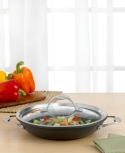NOT SO LONG AGO, VEGETARIAN COOKING MEANT COMPLICATED SAUCES AND LOTS OF DAIRY. A typical dish was a fancy gratin with fried strips of eggplant, a cream-enriched tomato sauce, and a custard made with three cheeses, eggs, and more cream. That was vegetarian cooking circa 1988.
Welcome to 1998, the year vegetarian cooking grew up. And Deborah Madison, the founding chef at San Francisco's Greens, the most famous vegetarian restaurant in the country, is once again leading the charge.
As we cook together in her sunny, southwest-style house in Santa Fe, Madison, now 52, reflects as we chat over bowls of fiery Thai curry with tofu and onions. "At Greens we may have overcompensated with too many sauces and too much dairy because there was no meat on the plate. There was this feeling that the food needed stature, and that meant complexity and richness. For me, vegetarian cooking no longer needs to be rich."
Today, there's less butter, cheese, and cream in her cooking. In fact, many dishes are dairy-free. Madison's new recipes have short ingredients lists and the emphasis is on strong, bold flavors like chiles, curry paste, and cilantro.
So, how do home cooks master this new style of vegetarian cooking? Madison says it's not just the ingredients you use, but the techniques. And in her recently published magnum opus, Vegetarian Cooking for Everyone, Madison is finally telling her technical secrets. Here she details the twenty-seven most important techniques for flavorful vegetarian cooking. Use these techniques to prepare Madison's six fundamental vegetarian recipes -- from soup to side dish to main course.
MADISON'S TECHNIQUES EMPHASIZE the tactile, sensory aspects of vegetarian cooking -- smelling dried herbs to judge their potency or dressing salad with your hands to see when greens are sufficiently coated. Follow these pointers from Madison and your cooking will taste better, with less effort.
CHOPPING, PEELING, AND JUICING
1 Bending your head forward while chopping or slicing vegetables can cause strain to build up in the shoulders and neck. Instead of using your eyes as a guide, curve the fingers on your free hand under your knuckles and use your curved fingers as a guide for your hand with the knife. You should glance down occasionally as you work, but for the most part you can hold your head upright.
2 To peel a tomato, slash a little "X" at the base with a knife, then drop it into a pan of boiling water. When you see the edges of the "X" begin to loosen and roll back (after 10 or 20 seconds), scoop out the tomato, drop it into a bowl of cold water, and then slip off the skin. To seed the tomato, cut it in half around the equator. Hold one-half in hand and pull out seeds with your fingers while squeezing gently.
3 To extract the most juice from lemons and limes, roll them on the counter while pressing down on them. Then slice in half and juice.
4 A mortar and pestle is a wonderful way to grind garlic into a thick paste. If you don't own a mortar and pestle, try mincing garlic with a little salt. The salt breaks down the garlic pieces and keeps them from clinging to the sides of the knife. Work minced garlic and salt into paste with the side of a knife.
5 A vegetable peeler isn't always the quickest tool for peeling potatoes, especially knobby ones. Instead, use a sharp knife. Start by cutting a thin slice off either end. Then cradle the potato in your hand and remove skin with five or six swift, long strokes, going from one end to the other. Peel turnips and rutabagas in the same fashion.
6 Keep two cutting boards in the kitchen and use one for fruits and nuts; use the other for garlic, onions, chiles, and other ingredients with strong flavors and/or odors.
HANDLING GREENS
7 Slice a head of lettuce at its base with a sharp knife and let the leaves fall open. Discard any tough, outer leaves. To prevent bruising, do not twist lettuce. Instead, gently tear large leaves.
8 Toss greens with a pinch of salt, then add the dressing (or just some oil and then a squeeze of lemon -- using your hands to catch any of the lemon seeds). Use your hands; they won't bruise the greens and you'll know by touch when there's enough dressing on them.
COOKING WITH TOFU AND SOYMILK
9 To rid tofu of excess moisture, there is no need for elaborate weighting and pressing. Unless you are deep-frying tofu, cutting the tofu horizontally into slabs and blotting excess moisture with a paper towel is fine.
10 Most cooks fry tofu to firm up its texture. However, if you prefer not to fry foods, you instead can drop cubes into a pot of simmering water for 5 minutes, drain the tofu, and then use the meaty cubes in stir-fries or curries.
11 Use soymilk as you would regular milk in cooking and baking; to approximate buttermilk, add 1 tablespoon white vinegar per cup and let stand for several minutes to curdle.
CHOOSING AND PREPARING HERBS
12 When using dried herbs, crumble them between your fingers to release their aromatic oils, then inhale to see how much aroma there is. Add more or less dried herb, based on the aroma they release.
13 Add dried herbs at the start of the cooking process. Fresh herbs are more volatile and are usually best added when cooking is almost completed.
14 Not all herbs dry well. Chervil, parsley, and cilantro turn flat and grassy, but basil, sage, tarragon, and marjoram retain a fair amount of flavor. Whole or cut-leaf dried herbs are more potent than powdered versions.
15 Fresh parsley is often quite sandy. To clean, vigorously swish bunch in bowl of water. Spin dry. Then, to remove leaves, grasp stems and hold leaves downward. Shave with large knife and chop.
BUYING OILS AND NUTS
16 Choose unrefined or partially refined vegetable oils. Look for the words pressed, cold-pressed, or expelled. Unlike refined supermarket oils, these retain their nutrients, including lecithin, vitamin E, and carotenes.
17 Buy nuts in shells or skins and make sure they are unroasted. Roasted nuts are often fried and often contain salt, MSG, and sugar. Nuts and seeds are best stored in the refrigerator.
COOKING FRUITS AND VEGETABLES
18 When sauteing, choose a large pan so that vegetables will have room to move around and brown. If crowded into a pan, vegetables will steam and not develop as much flavor.
19 When salting foods, add some at the beginning of the cooking process -- except with beans and large grains, which can toughen -- because salt brings out flavors in foods. Add salt to each component, then add just a pinch at the end to fine-tune. Salt added only at the end of cooking doesn't have time to bring out natural flavors in food.
20 When sauteing, add garlic toward the end of the cooking time to keep it from burning.
21 When making stock soups and stews, sauteing onions, carrots, and celery (along with other vegetables) before adding water help bring out their flavor. The more the vegetables are allowed to brown, the more color and depth they contribute.
22 When making quick stocks, use an abundance of vegetables in proportion to the liquid, for intense flavor in a minimum of time. Pour the contents of the stock pot through a sieve and press firmly to extract as much liquid as possible.
23 There are several kinds of potatoes -- high-starch potatoes for baking and frying, low-starch potatoes for boiling, and all-purpose potatoes that fall in between. To identify your potatoes, slice one with a knife. If the knife is covered with a foamy substance or the potato grabs onto the knife, it has a lot of starch and is best for baking. If not, it's a boiler. So-so, it's all-purpose.
PREPARING GRAINS AND BEANS
24 To make fluffy grains, place a towel under pot lid once they have finished cooking and let stand for five minutes. The towel, not the grains, will absorb moisture in the covered pot.
25 Use a double boiler to cook cereals without stirring constantly. Place cereal in top of double boiler, add water, and then place over pot of simmering water and cover. Twenty minutes later, it's done.
26 Put cooked pasta directly into pan with sauce, letting some of the cooking water drip into the pan and thin the sauce to the proper consistency for coating the noodles.
27 When buying dried beans, be sure that the skins are intact, and that the beans are neither chipped nor cracked -- signs that they are old and will take longer to cook because they are so excessively dry.
COPYRIGHT 1998 Weider Publications
Author: Jack Bishop, source: Natural Health
15% OFF Honey Bean Coffee for St Patrick's Day via this link with coupon code: stpatricksday. Expires 3/18
Save Up To 55% On The Entire Line Of Wusthof Culinar! Now at Cooking.com via this link
Expires 3/19
5% off any order at igourmet via this link with coupon code: KGB5. Expires 3/31
Free corkscrew with orders over $50 at the Wine Messenger via this link with coupon code: Freecork09. One time use, good through 6/30
Save up to 30% on Lodge cast iron cookware.
We'll miss you!
Share your favorite cooking tip with us: write to recipereq[AT]recipes.it













![Validate my Atom 1.0 feed [Valid Atom 1.0]](http://www.verimall.com/img/valid-atom.png)

No comments:
Post a Comment